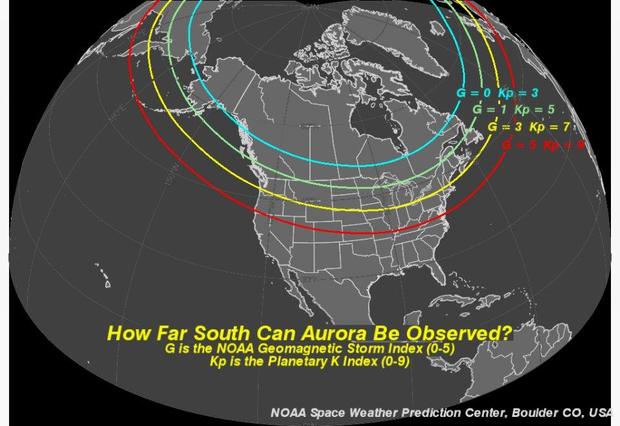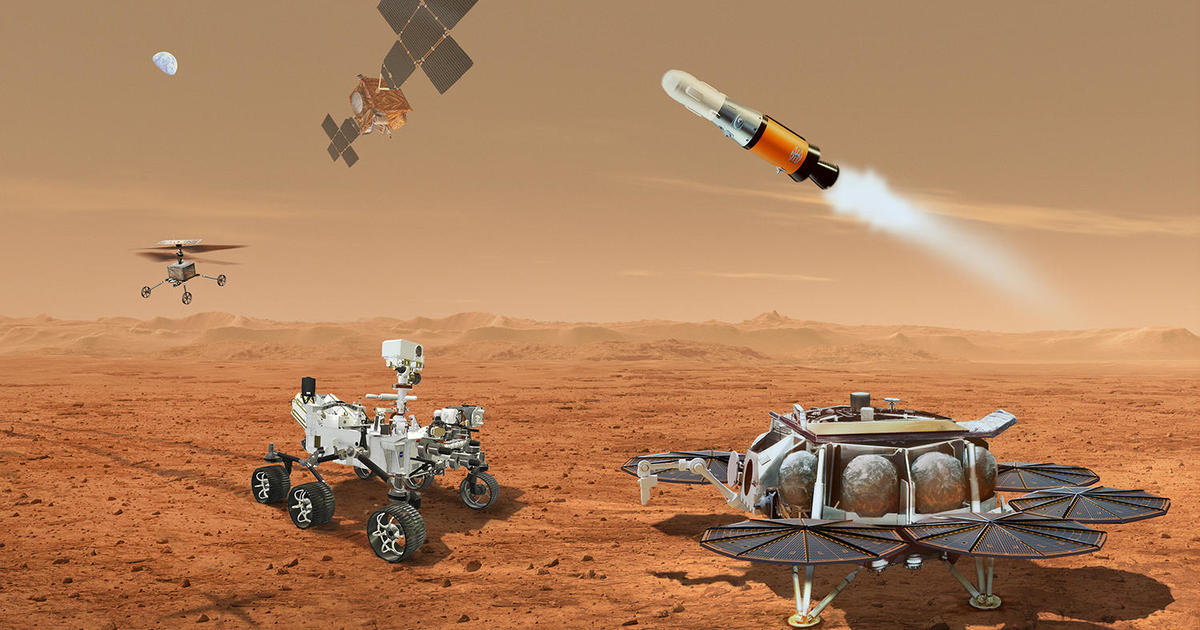U.S. no longer expected to have rare chance to spot northern lights
After predicting earlier this week that several states may get a rare and spectacular view of the northern lights, officials now say the lights will not occur far enough south for the vast majority of the nation to catch a glimpse. The change in forecast comes after officials downgraded the predicted intensity of the geomagnetic storm that causes them.
The National Oceanic and Atmosphere Administration previously said that a coronal mass ejection on December 7 shot plasma and magnetic field toward Earth. These solar storms are the source of northern lights, also known as aurora borealis, and stronger storms increase the chances of seeing the aurora at lower latitudes.
As a result of the mass ejection, NOAA predicted that geomagnetic storms with intensities of G2 and G3 would occur on December 10 and 11. At those intensities, aurora borealis may have been visible in much of the northern U.S., potentially as far south as New York. The yellow line on NOAA's map indicated the furthest southward potential for the northern lights.
But officials downgraded that prediction on Thursday afternoon, saying instead that the storms on December 10 and 11 would likely be G1. At that intensity, shown by the green line on the map, only the northernmost parts of the country would have the chance to see the lights.
Bill Murtagh, the program coordinator at NOAA's Space Weather Prediction Center. told CBS News that "most of the material from the ejection missed Earth. Consequently, we are no longer expecting any low latitude aurora."
"We typically see a dozen or so geomagnetic storms over the 11-year solar cycle that produce aurora visible in NY State," Murtagh said. "Typically we need level-4 and level-5 geomagnetic storms to see aurora in New York, although the aurora has been visible on the northern horizon from upstate NY during strong G3 storms."
After months of rest, the sun recently began a new 11-year cycle of activity. This activity will peak sometime in 2025, but in the years leading up to that peak, solar activity, such as strong solar flares, will become more common.
Don't be too disappointed by the lack of aurora borealis this week — the potential for northern lights was far from the only celestial event taking place this month. The Geminid meteor shower peaks next week, and on December 21, Jupiter and Saturn make their closest visible approach to Earth since the Middle Ages, known as the great conjunction.





